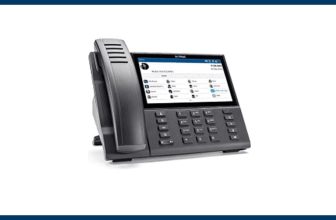Key Takeaways
- Document Management Systems (DMS) provide a centralized platform for storing, managing, and tracking electronic documents and images
- DMS offer benefits such as improved security, enhanced accessibility, increased collaboration, reduced storage costs, and streamlined workflows
- Choosing the right DMS involves assessing your organization’s needs, evaluating features, ensuring compatibility, considering scalability, and comparing pricing
- Effective DMS implementation requires a clear strategy, employee training, consistent naming conventions, regular access reviews, version control, and periodic audits
- DMS are particularly valuable in highly regulated industries like healthcare, finance, legal services, and insurance
Introduction to Document Management Systems
In today’s fast-paced digital world, businesses generate a tremendous amount of electronic documents and images. Managing this vast sea of information can be overwhelming without the right tools. That’s where Document Management Systems (DMS) come in. DMS are computerized platforms designed to store, manage, and track electronic documents and images of paper-based information. They provide a centralized location for various types of documents, including contracts, invoices, and proposals, making it easier for businesses to efficiently organize, control, and access their digital documents.
Key Benefits of Document Management Systems
Document Management Systems offer several significant advantages to businesses:
- Improved document security through features like encryption and access control
- Enhanced accessibility, allowing for quick retrieval of information
- Increased collaboration among employees, regardless of location
- Reduced storage costs and space requirements
- Streamlined workflows and automated processes
- Better compliance with regulatory requirements
- Reduced risk of data loss through secure backups
Implementing a DMS can bring numerous benefits to your organization. By improving document security, enhancing accessibility, facilitating collaboration, reducing storage costs, streamlining workflows, maintaining compliance, and minimizing the risk of data loss, a DMS can significantly enhance your business operations and productivity.
Challenges of Managing Documents Without a DMS
Managing documents without a proper DMS can lead to various challenges. One of the most common issues is misfiling, where important documents can be easily misplaced or incorrectly filed. This leads to a lack of organization, making it difficult to find specific documents when needed. Physical files and unsecured computers also pose security risks, increasing the likelihood of data breaches.
Paper-based document management is often time-consuming and inefficient, as it requires manual filing, retrieval, and distribution. Non-digitized documents are challenging to access remotely or share with colleagues, hindering collaboration. Meeting regulatory standards and maintaining compliance also becomes more complex without proper document management.
Essential Features of an Effective DMS
When looking for an effective DMS, there are several key features to consider. The system should have robust document input capabilities, such as scanning, manual upload, and bulk upload options. Document indexing is crucial for easy retrieval, along with advanced search functionality to quickly locate specific files.
Other essential features include:
- Document processing tools
- Workflow automation
- Robust security measures
- User-friendly dashboard
- Customization options
How to Choose the Right Document Management System
Selecting the right DMS for your organization involves careful consideration of several factors. Begin by assessing your specific needs and goals. What types of documents do you need to manage? How many users will require access? What are your security and compliance requirements?
Next, evaluate the features offered by different DMS and how well they align with your requirements. Ensure that the system is compatible with your existing software and tools to avoid integration issues. Consider the scalability of the DMS to accommodate future growth and expanding needs.
Top Document Management Systems: Leading Vendors and Solutions
When it comes to selecting a Document Management System for your organization, there are numerous options available in the market. Here are some of the top DMS vendors and their solutions:
Dropbox Business is a cloud-based file storage and sharing solution that provides a user-friendly interface for managing documents. It offers features like file versioning, granular permissions, and remote device wipe, making it a good choice for businesses with remote teams.
Dropbox
Ideal for small to large businesses, including SMBs, enterprises, and remote teams. Suitable for industries requiring extensive collaboration and secure file sharing, such as creative professionals, educators, and IT administrators.
Rasons to buy
- + Scalable storage options
- + Advanced collaboration tools like real-time editing and Dropbox Paper
- + Robust security features
- + Seamless integration with third-party apps
- + Centralized admin controls for user management
Possible Drawbacks
- –Higher costs compared to competitors
- –Requires a minimum of three users for business plans
- –Limited free plan (only 2 GB storage)
- ● Standard: $15/user/month (5 TB storage)
- ● Advanced: $20/user/month (unlimited storage with enhanced admin tools
Box is a cloud-based DMS that focuses on secure content management and collaboration. It offers features like advanced security controls, workflow automation, and integration with various third-party apps, making it suitable for businesses with strict compliance requirements.
Box
ideal for mid-market and enterprise businesses across industries that require secure content management, collaboration, and regulatory compliance. It suits organizations with significant document workflows, such as healthcare, finance, and legal sectors
Rasons to buy
- + Robust security features, including encryption
- + Seamless integration with popular business tools
- + Advanced collaboration tools for internal and external stakeholders
- + Workflow automation to streamline processes
Possible Drawbacks
- –Complex administrative setup and configuration requirements
- –Inefficient notification system for real-time updates
- –Limited offline access compared to traditional local sync solutions
- ● Free Plan: Basic features with 10GB storage
- ● Personal Pro: $10/month billed annually
Adobe Document Cloud is a comprehensive suite of tools for creating, editing, and managing PDF documents. It includes Adobe Acrobat DC, Adobe Sign for e-signatures, and integrations with other Adobe Creative Cloud apps, making it ideal for businesses that heavily rely on PDF workflows.
Adobe Document Cloud
Ideal for businesses that rely heavily on PDF workflows, including small businesses, enterprises, and professionals managing contracts, forms, and digital signatures
Rasons to buy
- + Comprehensive PDF tools for editing, signing, tracking, and sharing documents across devices
- + Integration with Adobe's ecosystem
- + User-friendly interface with 24/7 support and tutorials for onboarding
- + Advanced security features
Possible Drawbacks
- –Learning curve due to complex features
- –May encounter performance limitations with complex requests
- ● Standard Plan: $12.99/month
- ● Pro Plan: $14.99/month
- ● Creative Cloud plans start at $49.99/month
When evaluating these DMS vendors, consider factors such as feature sets, pricing, scalability, integration capabilities, and user reviews to find the best fit for your organization’s specific needs and budget. Many vendors offer free trials or demos, allowing you to test-drive their solutions before making a commitment.
Best Practices for Implementing a DMS
Once you’ve chosen a DMS, it’s essential to implement it effectively to maximize its benefits. Start by developing a clear document management strategy that outlines your goals, policies, and procedures. Train your employees on the proper use of the system to ensure adoption and consistency.
Establish consistent naming conventions and metadata practices to facilitate easy search and retrieval. Regularly review and update access permissions to maintain security and confidentiality. Implement version control to track changes and maintain document integrity. Conduct periodic audits to ensure ongoing compliance and identify any potential security vulnerabilities.
One of the most compelling aspects of modern document management systems (DMS) is their measurable impact on key operational metrics. These platforms are no longer just digital filing cabinets—they actively enhance efficiency, accuracy, and compliance while reducing costs. The chart below illustrates the core performance metrics where DMS solutions are driving substantial improvements:
Emerging Trends in Document Management Systems
As technology advances, Document Management Systems (DMS) are continuously adapting to meet evolving business needs. The latest trends highlight a shift toward smarter, more flexible, and environmentally conscious solutions:
- Sustainability efforts are being built into DMS platforms, encouraging paperless workflows and reducing environmental impact.
- Artificial intelligence (AI) and automation are enabling intelligent document processing, resulting in faster and more accurate data extraction and classification.
- Cloud-based DMS solutions are gaining traction due to their scalability, ease of access, and lower IT infrastructure requirements.
- Enhanced security measures like advanced encryption and multi-factor authentication are now standard to protect sensitive data.
- Mobile-first accessibility supports the needs of remote workers by enabling document access and management via smartphones and tablets.
The Role of DMS in Ensuring Compliance and Security
Document Management Systems play a vital role in maintaining regulatory compliance and enhancing security. They provide secure, encrypted storage for sensitive documents, protecting them from unauthorized access or data breaches. DMS also generate detailed audit trails, ensuring transparency and accountability for document-related actions.
Automated workflows within a DMS help reduce compliance-related errors by enforcing consistent processes and approvals. When faced with an audit, DMS simplify the response process by allowing quick retrieval of relevant documents. Advanced access control and permission settings ensure that only authorized individuals can view or modify sensitive information. DMS also enable automated document retention and destruction policies, ensuring compliance with industry-specific regulations.
Industry-Specific Applications of DMS
While DMS are valuable for businesses across various sectors, they are particularly crucial in highly regulated industries. In healthcare, DMS help ensure HIPAA compliance and secure management of patient records. Financial institutions rely on DMS to meet stringent reporting standards and regulatory requirements. Legal services use DMS to efficiently manage case files and maintain client confidentiality. Insurance companies leverage DMS to streamline claims processing and policy management.
Conclusion: Why a DMS is a Must-Have for Modern Businesses
In today’s digital age, a Document Management System is no longer a luxury but a necessity for businesses seeking to improve efficiency, security, and compliance. By centralizing document control, automating processes, and providing robust security features, DMS help organizations save time, reduce costs, and mitigate risks associated with document management.
As businesses continue to generate increasing volumes of digital content, implementing a DMS becomes crucial for maintaining a competitive edge and ensuring smooth operations in an increasingly complex regulatory environment. Investing in a reliable and feature-rich DMS is a smart decision that will pay dividends in the long run, empowering your organization to streamline workflows, enhance collaboration, and secure your valuable information assets.



